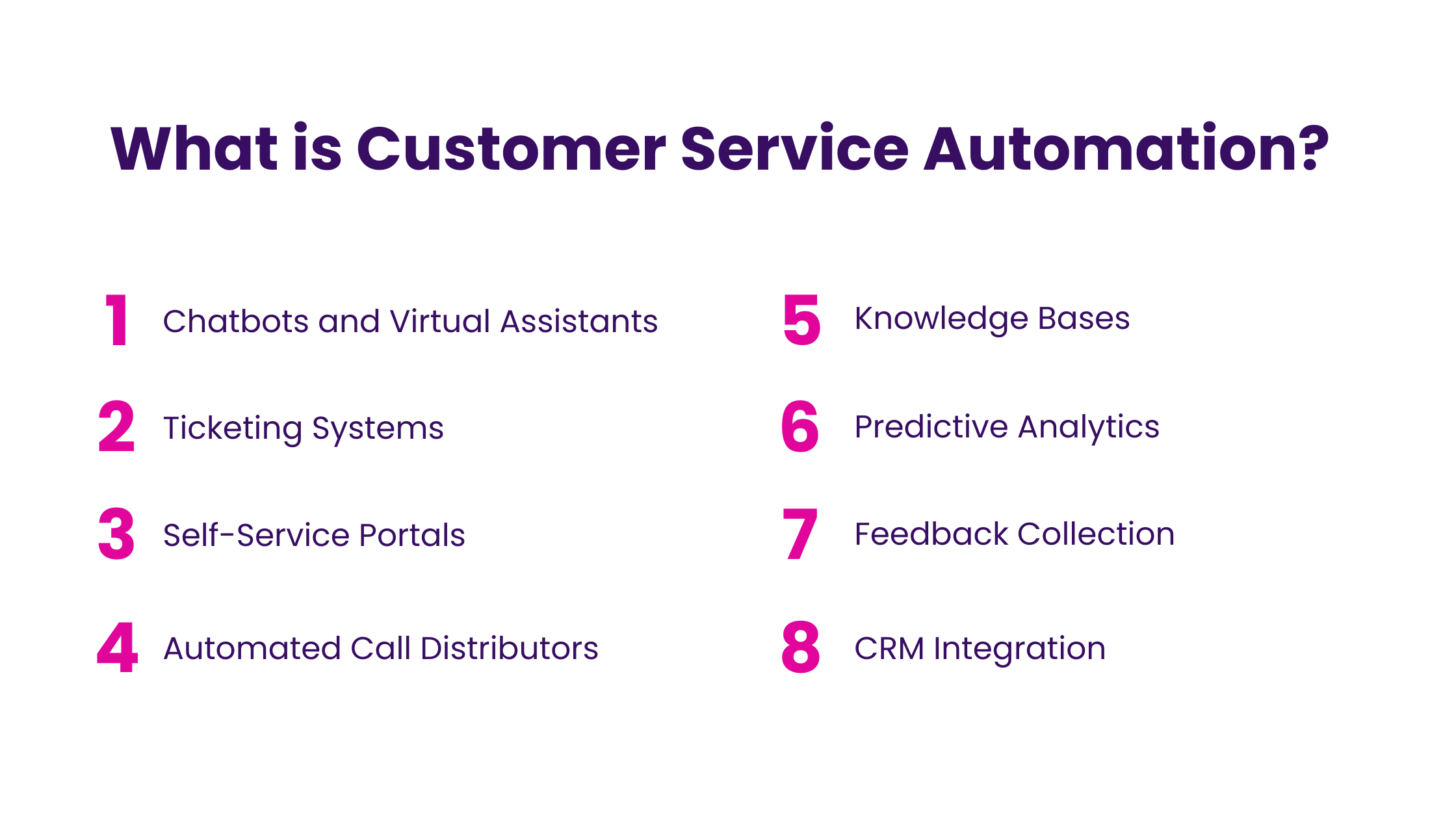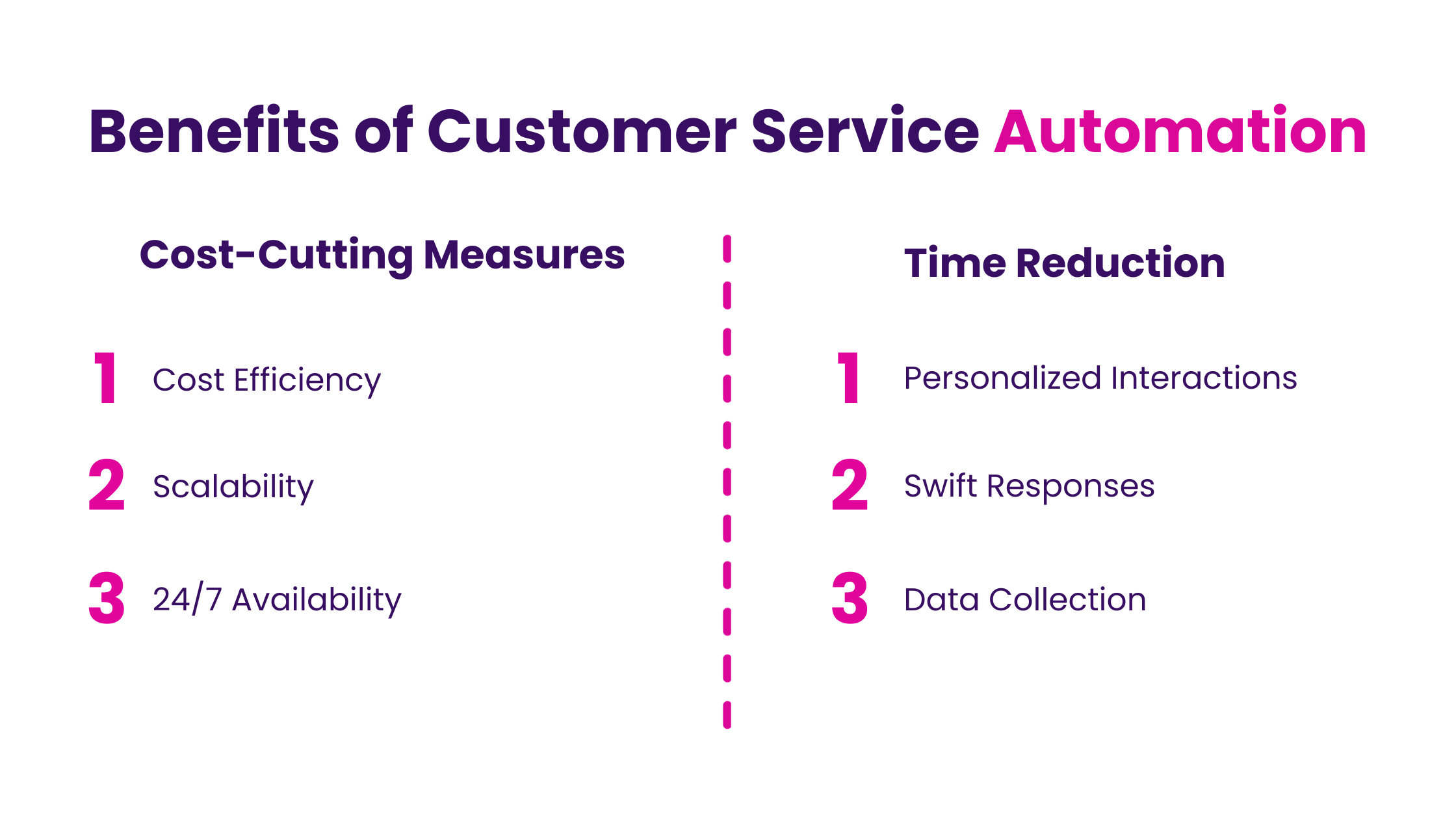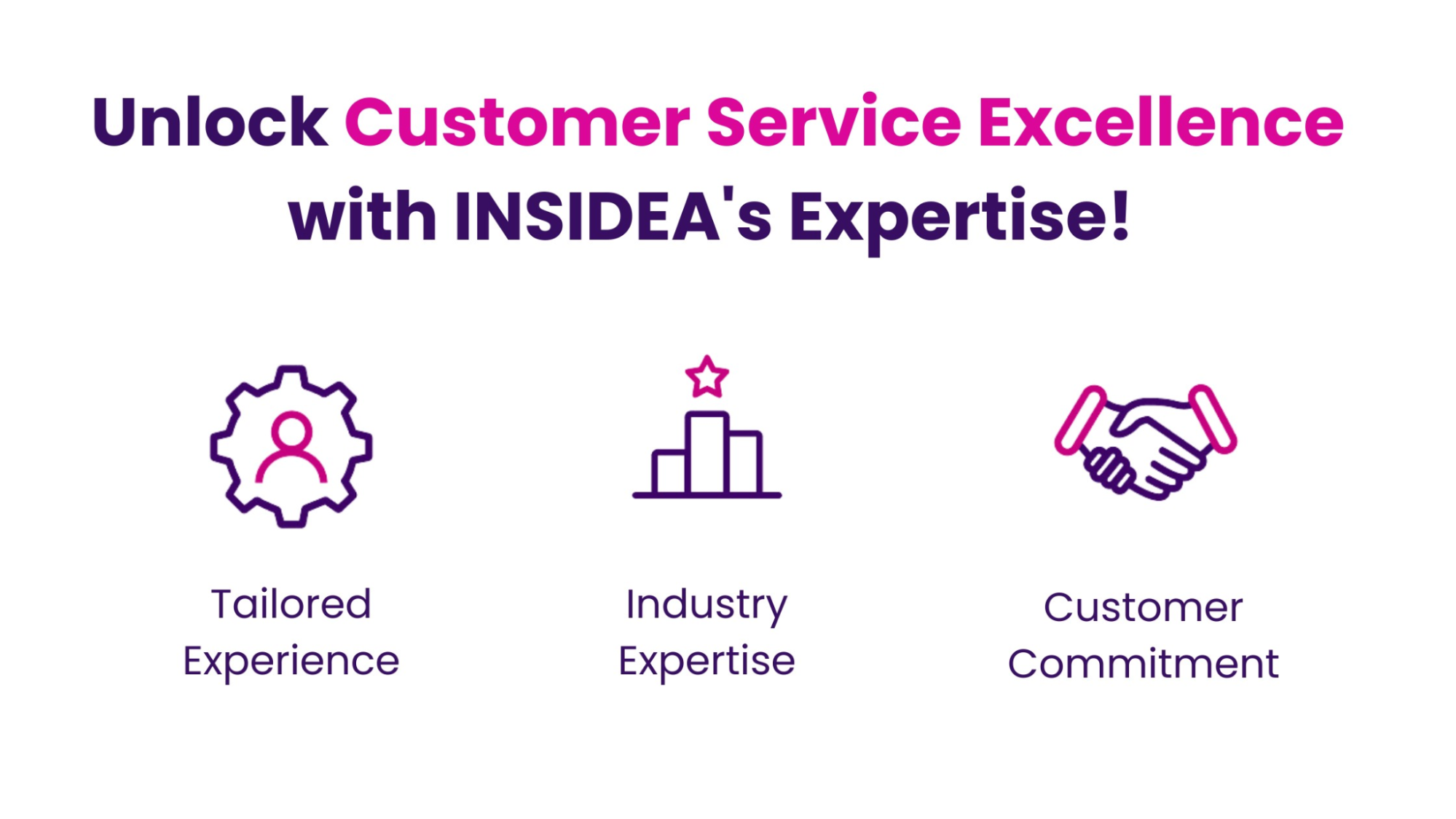Do you know how challenging it is to deliver timely customer service? Reacting promptly to consumer concerns and requests requires a proper operations framework. But it’s hard to balance quality and speed manually, meaning you need customer service automation.
So, in this blog, we will start with understanding what customer service is and how it provides benchmark solutions for clients and customers. And later, we will discuss which automation tool you can choose and why.
Let’s begin.
What is Customer Service Automation?

Customer service automation refers to using technology to carry out specific areas of customer assistance. Companies can use automated technology to reply proactively to simple inquiries, manage data, and provide self-service choices.
It saves money, boosts team productivity, and manages data in ways that would otherwise be impossible.
When most individuals consider how to automate customer care, they immediately think of chatbots. These are the most visible embodiments of automated help. However, numerous other automated customer service technologies should not be disregarded.
Here are some key components and aspects of Customer Service Automation:
- Chatbots and Virtual Assistants: These AI-driven tools can interact with customers in real time, answering queries, providing information, or guiding them through processes without human intervention.
- Ticketing Systems: Automated systems that track, prioritize, and manage customer inquiries or complaints.
- Self-Service Portals: Websites or apps where customers can find information, submit requests, or resolve issues independently.
- Automated Call Distributors: Systems that route incoming calls to the appropriate agent or department based on predefined criteria.
- Knowledge Bases: Centralized repositories of information that both customers can access for self-help and by customer service representatives to assist in answering queries.
- Predictive Analytics: Using AI and machine learning to predict customer needs or potential issues, allowing businesses to address them proactively.
- Feedback Collection: Automated surveys or feedback forms that gather customer opinions and insights post-interaction.
- CRM Integration: Automation tools that integrate with Customer Relationship Management (CRM) systems to provide a holistic view of the customer and streamline processes.
Benefits of Customer Service Automation

Customer service automation can be defined as a method of increasing efficiency without losing quality. Most of the advantages of automated support fall under two categories: saving money and time.
1.Cost-cutting Measures
Overall, customer service automation saves money since it:
- Lowers labor costs
- Boosts operating efficiency.
Customer service automation reduces costs in a variety of ways. For starters, it lowers labor expenses in customer service by reducing the need for human labor.
Client service automation improves procedures, enhancing operational efficiency and allowing firms to handle more client contacts with fewer resources. This decreases the number of errors and the requirement for costly rework.
Companies can accept more requests without increasing their resources proportionally. Self-service alternatives enable users to find answers independently, eliminating the need for human intervention and lowering support ticket counts.
This better resource distribution increases productivity while decreasing costs.
Here is how it helps:
- Cost Efficiency: Reduces the need for a large customer service team, leading to significant savings.
- Scalability: As the business grows, automation can handle increased customer queries without additional manpower.
- 24/7 Availability: Customers can get support anytime, even outside regular business hours.
2.Time Reduction
Customer service automation generally improves time management by providing immediate responses, streamlining processes, and allowing self-service.
Automated systems can respond to consumer inquiries immediately, reducing the need to wait for a human agent. This immediate availability of information expedites problem response and decreases customer wait times.
Additionally, automating customer service accelerates numerous procedures, such as data entry and ticket routing, resulting in speedier client interaction handling. Shorter response times, faster issue resolution, and shorter customer turnaround time result from increased efficiency.
Here’s how it helps:
- Personalized Interactions: Automation can tailor responses to individual customer preferences and history with the right data.
- Swift Responses: Automation ensures immediate replies, reducing wait times for customers.
- Data Collection: Automated systems can gather and analyze customer interactions, providing valuable insights for business improvements.
There’s also the convenience of self-service.
Customers can find answers through knowledge bases, FAQs, and chatbots, which can all be automated.
What Does This Mean for Clients?
Customers benefit more than just getting an answer quickly; many prefer automated service. And more than half of the customers prefer resolving difficulties independently rather than contacting customer care.
Customers want to be self-sufficient. A chatbot’s business-to-consumer conversations help customers find their solutions within their comfort.
We all take convenience for granted in the digital age. We want information at our fingertips and want to troubleshoot before contacting a support center.
This reflects an increasing expectation on the part of enterprises to provide acceptable self-service choices through automated help.
What Does This Mean for Your Customer Service Representatives?
Most support leaders believe technology, including automated solutions, can improve employee engagement rates.
By integrating automated customer service into operations, leaders may leave the mundane and frequent duties to automation software. Agents can escape the boredom of everyday chores by embracing their role as problem solvers and brand ambassadors through automated customer service.
This enables them to give individualized help and establish deeper client relationships by leveraging their experience, critical thinking skills, and empathy.
However, selecting the right Customer Service Automation is crucial for a smooth business function.
5 Key Challenges in Customer Service Automation
In customer service automation, while the benefits are plentiful, navigating its complexities is not without challenges. This segment explores five critical considerations that businesses must address to successfully implement and maintain effective customer service automation systems.
-
Balancing Automation with the Human Element
The integration of automation in customer service does wonders in handling routine tasks, but the human touch is irreplaceable for more nuanced interactions. Businesses must strive to strike a delicate balance where automation handles the bulk of standard queries, while human agents are reserved for complex or sensitive issues.
-
Upholding Privacy and Security Standards
The adoption of customer service automation involves handling vast amounts of personal customer data. With this comes the heightened responsibility of safeguarding privacy and ensuring robust security measures. Businesses must not only comply with stringent data protection laws but also actively work to fortify their systems against potential breaches.
-
Keeping Pace with Technological Advancements
To keep their customer service automation relevant and efficient, businesses must stay abreast of the latest technological developments. This involves regular updates and upgrades to their systems, ensuring they leverage the most advanced tools available to enhance customer experience.
-
Ensuring Seamless Integration
Integrating automation into existing customer service frameworks can be a complex task. It requires a seamless blend of new technology with the old, ensuring that all systems work in harmony. This integration must be executed with minimal disruption to current operations, and with a focus on enhancing, rather than complicating, the customer experience.
-
Training and Adaptation
As automation tools become more sophisticated, the need for skilled personnel to manage and interact with these systems grows. Businesses must invest in training their staff to adapt to these new technologies. This training is not just about technical know-how; it also involves adapting to a changing landscape where human agents are required to handle more complex and sensitive tasks that automation cannot.
Unlock Customer Service Excellence with INSIDEA’s Expertise

The integration of customer service automation represents a significant leap forward in client interaction and business efficiency. By embracing these automated solutions, businesses are not only streamlining their operations but also enhancing the overall customer experience. From cost savings and increased productivity to improved customer satisfaction and loyalty, the benefits are manifold. As we move further into a digitally-driven era, the adoption of such technologies is no longer just an option but a necessity for staying competitive and relevant.
Remember, the right automation tools, when chosen and implemented thoughtfully, can transform your customer service from good to exceptional. So, take the leap towards automation and watch your business thrive in an environment where efficiency and customer satisfaction go hand in hand.
Are you ready to transform your customer service and take your customer experience to the next level? INSIDEA is here to guide you through every step of the way, ensuring that your support team is empowered to deliver exceptional service.
As experts in customer support solutions, we pride ourselves on helping businesses optimize their support strategies for maximum efficiency and customer satisfaction. Reach out today to discover how INSIDEA can revolutionize your customer support and contribute to your business success!
Tailored Support Strategies: At INSIDEA, we understand that every business is unique. That’s why we work closely with you to develop customized support strategies that align with your specific needs and goals.
Industry Expertise: Our team brings a wealth of experience and industry knowledge to the table, ensuring that you have access to the best practices and insights in customer support.
Customer Commitment : Your customers’ happiness is our top priority. We are dedicated to helping you exceed their expectations and foster long-lasting relationships.
Ready to elevate your customer support experience? Book a meeting with our experts today and start your journey towards outstanding customer service and satisfaction.








































